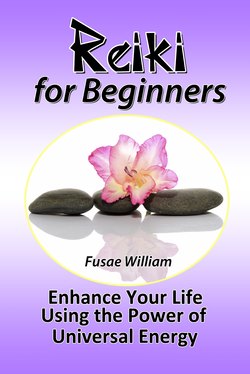Читать книгу Reiki for Beginners: Enhance Your Life Using the Power of Universal Energy - Fusae William - Страница 7
На сайте Литреса книга снята с продажи.
Reiki Traditions
ОглавлениеReiki has several branches but there are two main traditions for Reiki, Traditional Japanese Reiki, and Western Reiki.
Traditional Japanese Reiki
Traditional Japanese Reiki is the term used to describe the Reiki system that was developed under Usui, the teachings that developed in Japan and was traditionally only practiced and taught in Japan.
According to traditional Japanese Reiki, the universal energy is referred to as the Three Diamonds, Earth Ki, Heaven KI, and Heart KI; remember that Ki means energy. Traditional Reiki has a focus that is more on meditation, self-treatment, and self-awareness with the treatment of others through the use of Reiki as a secondary approach to healing.
Reiki is used primarily for one’s self in traditional Japanese Reiki and for healing and helping others as secondary, but still very important.
The hand positions developed by Usui that are taught in Traditional Japanese Reiki are more extensive than the hand positions that Western Reiki use, in other words, the Traditional Reiki methods involve more palm healing and more hand-on healing.
Traditional Japanese Reiki relies more on intuitive hand placement instead of set hand patterns; although they rely less on set hand patterns, the number of hand patterns developed by Usui is more extensive than those used in Western Reiki
Traditional Japanese Reiki can be broken down into a few traditions; the major ones are listed below.
•Usui Reiki Ryoho Gakkai – This tradition is named after the Reiki master’s society that was founded by Mikao Usui and is considered to be the oldest Reiki tradition. This society remained secret for many years, guarding their secrets closely and although the society is now known to exist, little information about them or their teachings has been available to the public.
•Reido Reiki Gakkai – This tradition’s name translates as “spiritual Occurrence and spiritual energy society” and was developed by masters of the Ryoho Gakki. There is not much difference between this Reiki tradition and Usui Reiki Ryoho Gakkai.
•Komyo Reiki Kai – This tradition’s name means “enlightened spiritual energy association” and was established by Huyakuten Inamoto, a Reiki master who actually had great knowledge of Western Reiki traditions.
•Jikiden Reiki – This tradition’s name means “the direct teaching of spiritual energy” and was taught by Dr. Hayashi.
Western Reiki
Western Reiki was developed by Hawayo Takata and was trained by Dr. Hayashi, who developed Jikiden Reiki, a traditional Japanese Reiki tradition. Hawayo Takata was trained in Japan and then moved to Hawaii, taking her knowledge of Reiki with her and began to practice it and teach it there; she modified some of the traditional Japanese Reiki teachings to make Reiki more compatible with the Western traditions and it worked because Reiki began to gain popularity in the Western world.
Western Reiki does not rely on using the traditional method of intuitive placement of the hands to heal, but rather it relies on having set hand patterns for various treatments.
Depending on what the practitioner wants to achieve through the use of Reiki, the placement of the hands differs.
The Western traditions of Reiki include ideas taken from traditional Indian healing, such as the aura and chakras.
Chakras and auras are not used in traditional Japanese Reiki but they are important to Western Reiki, along with the use of meridian energy lines, which are natural energy lines that exist on the earth.
Western Reiki focuses more on treating others first and self-treatment second, which is the opposite of traditional Japanese Reiki.
The chakras used are as follows (starting from the top of the head and going down the body)
Crown Chakra
Third Eye Chakra
Throat Chakra
Heart Chakra
Solar Plexus Chakra
Sacral Chakra
Base/Root Chakra
Western Reiki is also further broken down into different traditions as well.
•Usui Reiki Shiki Ryoho – The translation for this is usually “Usui’s spiritual energy style of medical treatment/therapy.” This Western tradition of Reiki is the one that is closest to the system developed by Hawayo Takata and is still taught to this day by her granddaughter. There are three levels in this tradition and the four symbols passed down from traditional Reiki are used. This is the most popular tradition of Reiki used in the Western world.
•Usui/Tibetan Reiki – This tradition, developed by Arthur Robertson, developed out of the Usui Reiki Shiki Ryoho tradition includes some techniques that are from the original Reiki teachings, developed by Usui such as the scanning methods, dry bathing method, and the healing eyes method. This tradition pulls ideas from Tibetan traditional medicine and has four levels.
•Gendai Reiki Ho – The name of this tradition translates to “modern spiritual energy method” and is a blend of both Western Reiki and traditional Japanese Reiki and it was developed by Hiroshi Doi, who was trained in Western Reiki and then became a member of the Usui Reiki Ryoho Gakkai, where he blended what he learned from both into this tradition.
